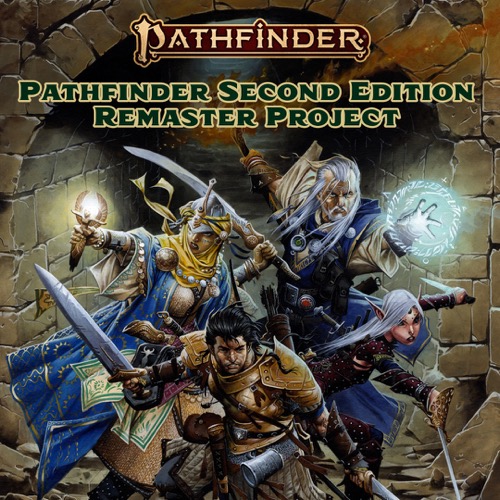Hi everyone! James here to talk a little bit about the Remaster project. We're getting closer and closer to Pathfinder Player Core and GM Corereleasing in November. To shine a little more light on what's coming, the marketing team and us thought we would kick off a blog series going into some of our changes in a little more depth. We'll start things off with a class, the wizard!
The wizard is the classic arcane spellcaster who learns magic in the most academic way: institutions, tomes, tutors and the like, and we wanted this to come through in how the class feels to build and play, so expect to see some more references to training, incantations, runes, spell formulas, and the like in the feats and features.
Ezren, the iconic wizard. Art by Wayne Reynolds While the wizard was generally already providing a satisfying play experience at the table, it was also a class that interacts very heavily with one of the larger changes we’re making in the Remaster, which is the removal of the eight schools of magic that were deeply tied to rules we were using via the OGL. Though this presented a big challenge in remastering the class, it also let us solve one of the biggest frustrations of the wizard, which is that there wasn't a whole lot of space left for them to expand. One of the most commonly requested expansions for any class is additional major paths to build your characters along, but because the wizard schools already had all eight schools of magic that could ever exist in the setting (plus universalist), we could never increase the number of wizard schools or explore more interesting options beyond those preset themes.
The new role for arcane schools is as just that: actual mages' curricula in Golarion. This allows us to make much more tightly focused schools that really let you sell the theme of your wizard, from the tactical spells of the School of Battle Magic (fireball, resist energy, weapon storm, true target and the like) to the infrastructure-focused spells of the School of Civic Wizardry (hydraulic push for firefighting, summon construct and wall of stone for construction, pinpoint and water walk for search and rescue, and earthquake and disintegrate for controlled demolitions). We've also rearranged the existing wizard focus spells and, in some places, changed them a little bit to fit their new locations—the School of Mentalism's charming push focus spell functions much like the original enchanter's charming words, but the new spell doesn't have the auditory or linguistic traits, since the School of Mentalism is much more about direct mind magic.
This also opens the door to create more schools in the future based on the specific schools of magic in the setting, and I know my colleagues in the Lost Omens line have already started thinking of what some of these might be (they have, as yet, sadly rejected my suggestion for a goblin-themed wizard school containing mostly fire and pickling spells).
We haven't just remastered the schools; we wanted to go through the feats as well and give the wizard a few fun toys to underscore
how they're nerdstheir academic mastery of magic. Some of these are tools originally developed in other places that make perfect sense for a wizard to have, like the Knowledge Is Power magus feat (with a few wizard-specific adjustments). We also gave the wizards some new feats, like the following:
Secondary Detonation Array [one-action] Feat 14
Manipulate, Spellshape, Wizard
You divert some of your spell’s energy into an unstable runic array. If your next action is to Cast a Spell that deals damage, has no duration, and affects an area, a glowing magic circle appears in a 5-foot burst within that area. At the beginning of your next turn, the circle detonates, dealing 1d6 force damage per rank of the spell to all creatures within the circle, with a basic Reflex save against your spell DC. If the spell dealt a different type of damage, the circle deals this type of damage instead (or one type of your choice if the spell could deal multiple types of damage).
This feat ties into some of the flavor tweaks we've made to wizards to have them talk about their abilities a little more academically, and it's burst of damage is one that requires a little bit of forethought in strategy to get the most out of, something that a spellcaster whose key attribute is Intelligence might gravitate toward.
That's our look at the wizard! Of course, what would a wizard be without their spells? Check back in on Thursday, where we'll go over some of the updates to magic coming in the remaster, from new spells to some of the new rules for spellcasting!
James Case (he / him)
Senior Designer
Player Core Preview: The Wizard, Remastered
Tuesday, September 19, 2023








